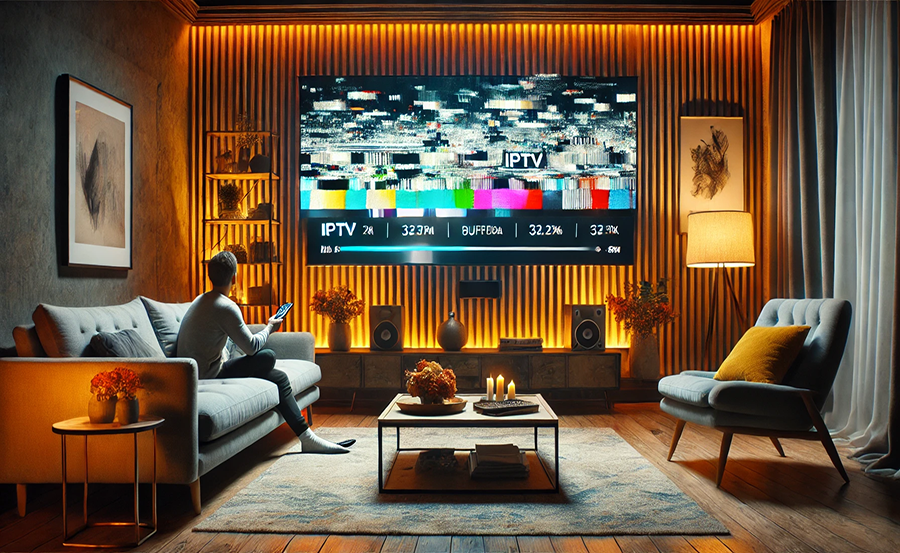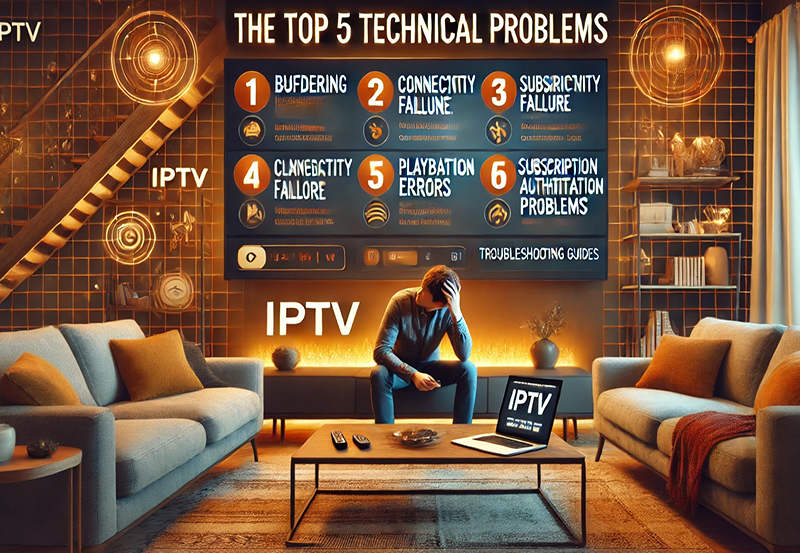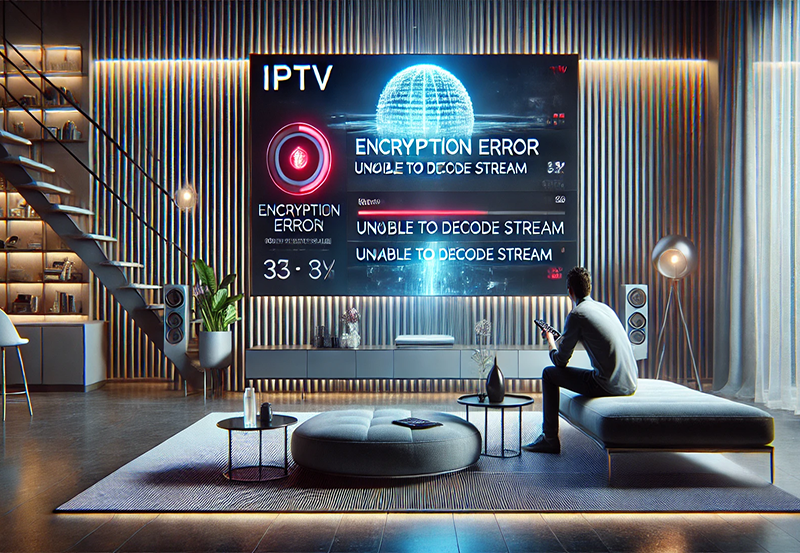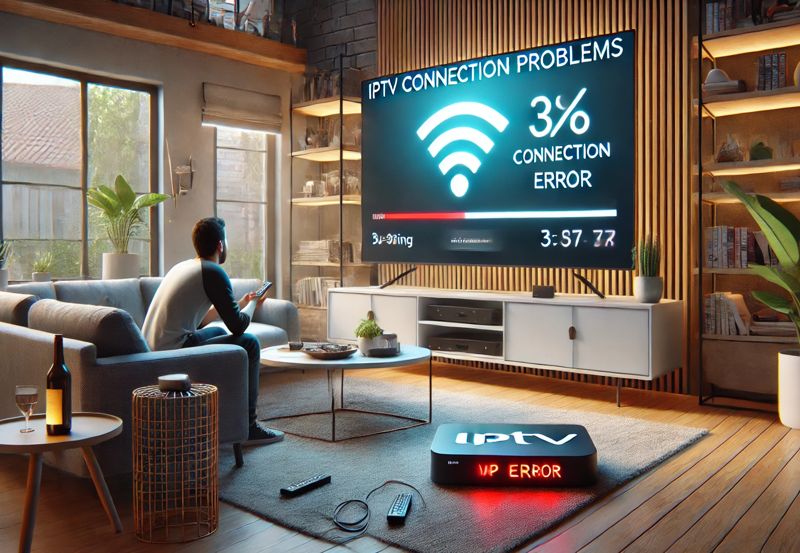In the ever-evolving world of technology, the way we consume media has dramatically shifted. No longer are we bound to traditional satellite or cable services. Instead, we have embraced the flexibility and variety offered by Internet Protocol Television, commonly known as IPTV. From Live TV streaming to accessing on-demand shows, IPTV has revolutionized the entertainment landscape. However, like any technology, it is not without its issues. In this guide, we will explore the signs of IPTV service interference and offer practical troubleshooting tips to optimize your viewing experience.
Understanding IPTV and Its Growing Popularity
IPTV delivers television content over the internet, bypassing traditional methods of satellite or cable delivery. This modern approach caters to the demand for more personalized viewing experiences and convenience. As more people opt for IPTV services, providers such as Roku are continuously innovating to enhance user satisfaction.
The Evolution of Live TV Streaming
The advent of Live TV streaming via IPTV has disrupted conventional broadcasting. It allows users to watch real-time television broadcasts online, from news and sports to entertainment and education. This convenience is particularly favored by audiences seeking flexibility with content viewed on various devices at their convenience. However, as with any digital service, users often encounter technical difficulties.
Streaming Advice:
Enhance your entertainment with Buy IPTV online and enjoy premium global content from anywhere.
IPTV on Roku: A Popular Choice
Roku’s adaptability to various IPTV services has increased its popularity. Offering a straightforward setup and a vast selection of channels, it serves as a user-friendly gateway into the world of IPTV. Yet, users often face issues such as buffering, poor picture quality, or sudden channel loss. Recognizing interference signs is the first step toward resolving such concerns.
Identifying Interference in Your IPTV Service
Early detection of IPTV service issues can prevent prolonged interruptions and enhance your viewing experience. Some common signs of interference include frequent buffering, unexpected signal loss, and inconsistent video quality.
Frequent Buffering
Buffering occurs when the video pauses during playback to load more data, often caused by a slow internet connection. Identifying whether the issue lies with your network or the IPTV provider is essential for troubleshooting.
Unexpected Channel Loss
Unexpected channel loss, although rare, can occur due to technical glitches or issues with the IPTV provider. Checking the service status or resetting your device can often resolve the problem.
Inconsistent Video Quality
Inconsistent video quality is another telltale sign of interference. It may be caused by variable internet speeds, poor device settings, or inadequate bandwidth. Correcting these issues enhances IPTV performance significantly.
Common Causes of IPTV Service Interference
Service interference often results from a combination of network constraints and device-specific issues. Identifying these causes enables users to address them effectively.
Network Issues
Network constraints, primarily due to slow internet speeds or unstable connections, significantly impact IPTV streaming. Checking network speed and reducing bandwidth usage can alleviate these problems.
Device Configuration
Inappropriate device settings often lead to performance issues. Ensuring your IPTV on Roku device is configured correctly can improve streaming quality.
Service Provider Limitations
Occasionally, issues stem from the service provider, including server downtimes or bandwidth limitations. Contacting your IPTV provider can provide insights and potential fixes for these problems.
Effective Troubleshooting Tips for IPTV Interference
Enhancing your IPTV experience involves a combination of network optimization and device management. The Expert’s Guide to IPTV Enjoyment includes practical strategies to combat interference issues.
Optimizing Internet Connection
Ensuring a stable internet connection is crucial for uninterrupted IPTV streaming. Steps include upgrading your router, reducing the number of connected devices, and checking for network interference.
- Upgrade to a high-speed internet plan
- Position the router centrally in your home
- Limit the number of simultaneous connections
Adapting Device Settings
Configuring device settings for optimal performance can greatly enhance IPTV streaming on platforms like Roku. Adjusting resolution settings and ensuring firmware updates can resolve many technical issues.
Contacting Your Service Provider
If technical issues persist, reaching out to your IPTV service provider for support can be beneficial. They may offer specific solutions or escalate the issue for a more tailored response.
Ensuring a Robust IPTV Experience
To enjoy a seamless IPTV experience, continual monitoring and proactive handling of potential issues is essential. Understanding and resolving interference ensures uninterrupted entertainment.
Regular Network Checks
Conducting regular speed tests helps monitor your network’s ability to support IPTV services. This proactive approach helps identify and resolve issues before they impact your viewing experience.
Speed Test Recommendations
Regular speed tests using tools like Ookla or Fast.com can provide insights into your internet connection’s stability and speed.
Updating Device Software
Ensuring your device firmware and applications are up to date is crucial for seamless IPTV functionality. Updates often include bug fixes and enhancements that improve service reliability.
Innovative Technologies Impacting IPTV
Technology advancements continue to reshape the IPTV landscape, offering improvements in quality and user experience. Staying informed about these innovations is beneficial for users and providers alike.
The Role of AI in IPTV
Artificial Intelligence is playing a significant role in enhancing IPTV services, from personalized recommendations to dynamic bandwidth management, ensuring smoother streaming experiences.
5G Networks and IPTV
The advent of 5G networks promises significant improvements in IPTV services by reducing latency and increasing data speeds, offering users high-quality streaming experiences.
Final Thoughts on Achieving Uninterrupted IPTV Enjoyment
Ensuring a trouble-free IPTV experience requires a balance of technological understanding and proactive management. By recognizing potential interference signs and implementing these troubleshooting tips, users can optimize their viewing experience and enjoy a seamless streaming journey.
Frequently Asked Questions

What is IPTV, and how does it differ from traditional TV services?
IPTV provides television content over the internet, offering users more flexibility and a wider range of content compared to traditional satellite or cable TV services.
How can I improve my IPTV streaming experience on Roku?
Improving IPTV performance on Roku involves ensuring a stable internet connection, using updated devices, and configuring settings for optimal streaming quality.
What are common signs of IPTV service interference?
Common interference signs include frequent buffering, unexpected channel loss, and inconsistent video quality, often linked to network or device issues.
Are there technologies enhancing IPTV services?
Yes, emerging technologies such as AI and 5G are significantly enhancing IPTV services by offering improved streaming quality and personalized user experiences.
How do I select the best IPTV service provider?
Selecting an IPTV provider involves considering factors such as content variety, customer support, reliability, and user reviews to ensure you get the most suitable service for your needs.
Solving ‘IPTV Playback Failed’ Issues on Linux: A Complete Guide





